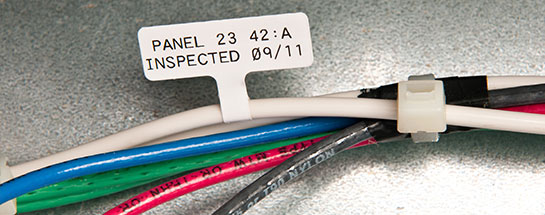It takes a lot to get it right. To be a company that lasts more than 100 years by continually evolving and growing to meet the needs of our markets and customers. Our first-to-the-market and best-in-the-market approach led us to receive hundreds of patents over the years and truly shape an industry. We do what others don't in ways they can't. We offer innovative products backed by years of research and development. Beyond our quality products and reliable solutions, we add value for our customers through strong partnerships and a commitment to solving important problems. Brady offers solutions to help increase safety, security, productivity and performance throughout your facility—everything from printing systems, software and high-performance labels to facility signs, safety devices, expert safety services and more.
Electricity powers the world. It lights up, turns on and charges nearly everything we touch, all with the flick of a switch. But behind switch plates and outlets lies a colorful, spaghetti-like network of wires: red, black, yellow, green — each designed to connect, and keep us safe.
Whether you install, repair or upgrade wires, you may have noticed, no two wiring systems are exactly the same. But most do share at least one thing in common: a way to identify each wire. And that way is with color.
Simply put, color makes it easier to work with wires. Just ask those who come in frequent contact with wires, mainly:
- Electricians
- Electrical engineers
- Contractors
- Technicians
- Homeowners
Instead of wondering … Is this wire hot? Neutral? For grounding? A quick look at a wire’s color can reveal its role in powering an appliance or circuit. It’s simple. It’s safe. And, it’s designed to take the guesswork out of electrical work.
But it wasn’t always this way.
A brief history of wiring color codes
It took until 1928 for wire color coding to make its debut. The National Electrical Code® (NEC) was the first to reference it, and today continues to set the standards for the electrical industry. Following a uniform color code makes it easier to assess electrical wiring, and ensure safety among licensed professionals and homeowners alike.
6 Benefits of using color-coded wires
Color has many benefits, especially when used with electrical wires.
-
Color grabs our attention
It’s no mystery, color gets our attention. When compared to non-colored items, it’s the colored ones that command more of our visual attention. For electricians, wire colors indicate how power moves within circuits.
-
Color increases safety
Color alerts us to danger. In the case of electricity, recognizing a red electrical wire (hot wire) could mean lowering the risk of electrical shocks, burns, electrocution and fires. If a body encounters a high-magnitude electrical surge, it could take years to recover.







